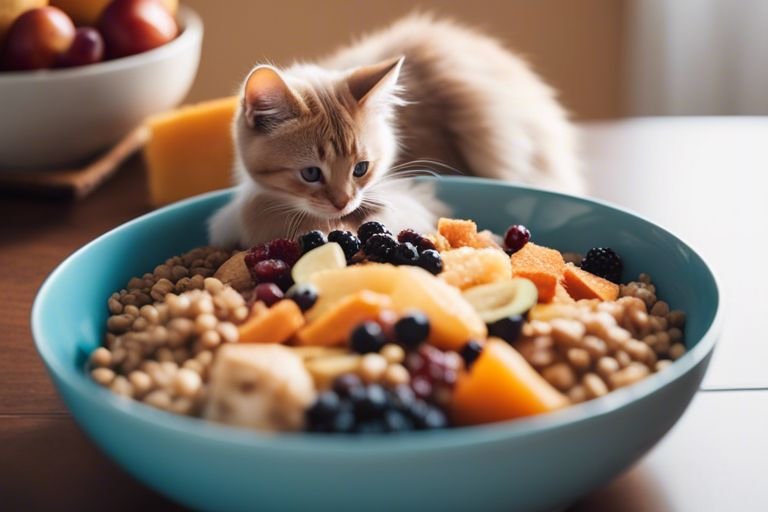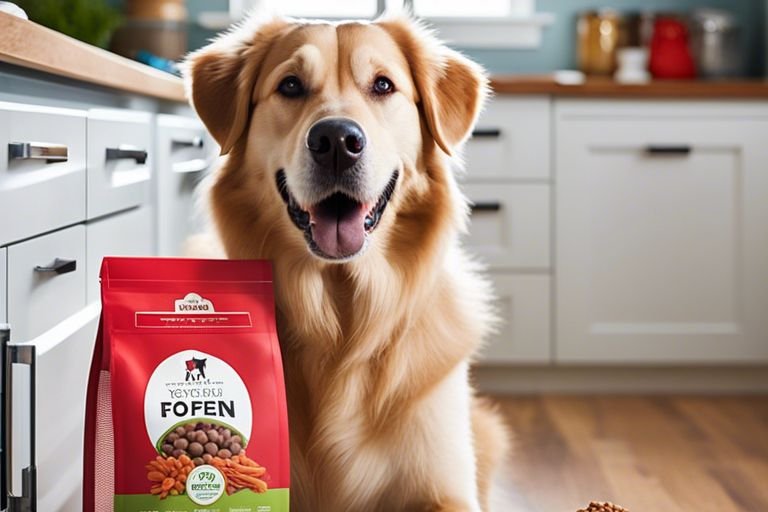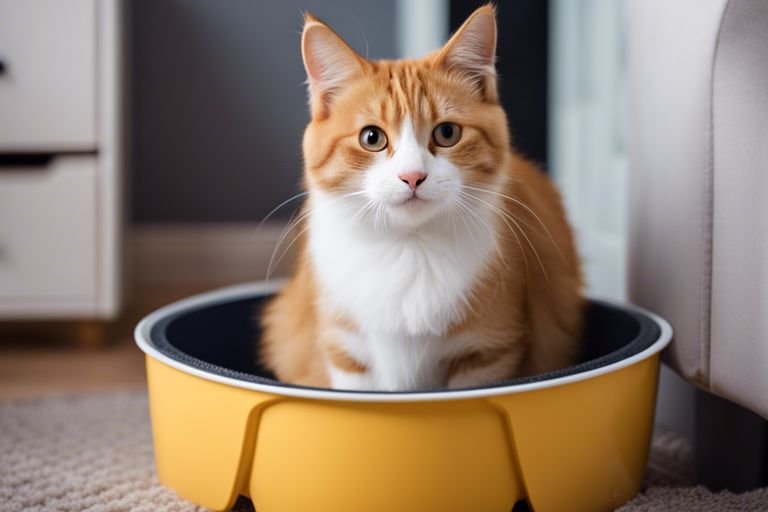
Fiber is a key component in a cat’s diet, helping to promote healthy digestion and prevent numerous health issues. Transitioning your feline companion to a high fiber cat diet can be beneficial, but it’s crucial to do it gradually and with care. In this blog post, we will outline five easy and effective ways to switch your cat to a high fiber cat diet, ensuring they maintain optimal health and well-being.

Understanding Cat Nutrition
Key Components of a Balanced Feline Diet
The foundation of a healthy diet for your cat includes a balance of vital nutrients such as proteins, fats, carbohydrates, vitamins, and minerals. Proteins are crucial for muscle development and overall growth, while fats provide a concentrated source of energy. Carbohydrates like fiber aid in digestion and help regulate blood sugar levels, promoting a sense of fullness.
How Fiber Fits into Your Cat's Dietary Needs
For your cat’s digestive system to function optimally, fiber plays a vital role. Fiber helps promote healthy bowel movements, prevents constipation, and can aid in weight management. It also supports the growth of beneficial gut bacteria, which contributes to your cat’s overall well-being.
Your feline companion’s dietary needs require a careful balance of nutrients, including fiber. High fiber cat diets can be beneficial for cats with specific health conditions such as diabetes or obesity. When introducing more fiber into your cat’s diet, it’s vital to do so gradually to avoid any digestive upset. Be sure to consult with your veterinarian to determine the ideal amount of fiber for your cat’s individual needs.

Transitioning to a High Fiber Cat Diet
Gradual Transitioning Strategies
You may be excited to switch your cat to a high fiber cat diet for their health benefits, but remember that sudden dietary changes can upset their stomach. With gradual transitioning strategies, you can help your feline friend adjust smoothly. Start by mixing a small amount of the new high fiber food with their current diet, gradually increasing the proportion over 7-10 days until they are fully transitioned.
Tips for Picky Eaters
Strategies for dealing with picky eaters can make the transition to a high fiber cat diet easier. Offer a variety of high fiber foods to pique their interest; some cats prefer wet food over dry, while others may favor a specific flavor. Introduce new options slowly and be patient. Assume that your cat may need time to adjust to the new textures and tastes.
- Rotate flavors and textures to keep mealtime exciting.
- Consider warming the food slightly to enhance the aroma and appeal.
- Consult with your veterinarian for specialized advice on your cat’s dietary needs.
High Fiber Cat Diet Options
All cat owners understand the importance of providing a well-balanced diet for their furry companions. Whether you are looking to improve your cat’s digestive health or manage their weight, incorporating high fiber foods into their diet can offer numerous benefits. If you’re wondering how to make this dietary shift easier for your cat, you can find helpful tips on How can I get my cat to eat more fiber?
Commercial High Fiber Cat Foods
Fiber-rich commercial cat foods are readily available and can provide a convenient way to increase your cat’s fiber intake. Look for cat food brands that specifically mention high fiber content on their labels. These specialized formulas are designed to support digestive health and can help regulate your cat’s bowel movements.
Supplementing Fiber with Natural Foods
Fiber-packed natural foods can also be incorporated into your cat’s diet to boost their fiber consumption. Some common natural sources of fiber for cats include pumpkin, steamed vegetables, and psyllium husk. These natural ingredients not only add fiber to your cat’s diet but also offer imperative nutrients and antioxidants for overall health.
The key to successfully switching your cat to a high fiber cat diet is to gradually introduce these new foods and monitor their response. Always consult with your veterinarian before making any significant changes to your cat’s diet to ensure their nutritional needs are being met.

Monitoring Your Cat's Health
Recognizing Positive Changes
For any cat owner transitioning their feline friend to a high fiber cat food, it is important to monitor for positive changes in their health. Look for signs such as improved digestion, regular bowel movements, and increased energy levels. These are all indicators that the new diet is working well for your cat.
When to Consult Your Veterinarian
When switching your cat to a high fiber cat diet, it’s crucial to observe any negative changes in their health that may require veterinary attention. If your cat experiences persistent diarrhea, vomiting, or significant changes in weight, consult your veterinarian immediately. These could be signs of an underlying health issue that needs to be addressed promptly.
Plus, always consult your veterinarian before making any dietary changes to ensure it is suitable for your cat’s specific health needs. They can provide personalized recommendations based on your cat’s age, weight, and any existing medical conditions.
Summing up
As a reminder, transitioning your cat to a high fiber cat diet can be beneficial for their digestive health and overall well-being. By gradually introducing high fiber foods, providing plenty of water, incorporating canned pumpkin or green beans, offering fiber-rich treats, and consulting with your veterinarian, you can successfully switch your cat to a high fiber cat diet. Remember to monitor your cat’s progress and make any necessary adjustments along the way. With these easy steps, you can help support your cat’s digestive system and promote a healthy lifestyle.
FAQ
Q: Why is switching my cat to a high fiber diet important?
A: Switching your cat to a high fiber cat diet can help regulate their digestion, prevent hairballs, and maintain a healthy weight.
Q: How do I know if my cat needs a high fiber cat diet?
A: If your cat is experiencing constipation, diarrhea, or weight issues, it may benefit from a high fiber cat diet. Consult with your veterinarian for guidance.
Q: What are some sources of fiber for cats?
A: Good sources of fiber for cats include pumpkin, psyllium husk, bran, and certain fruits and vegetables like peas and sweet potatoes.
Q: How do I transition my cat to a high fiber cat diet?
A: Gradually mix increasing amounts of high fiber cat food into your cat’s current diet over 7-10 days to allow for proper digestion and acceptance.
Q: Are there any potential risks in switching my cat to a high fiber cat diet?
A: It’s important to consult with your veterinarian before making any dietary changes, as too much fiber can lead to digestive issues in some cats. Always monitor your cat’s response to the new diet and make adjustments as needed under veterinary guidance.




